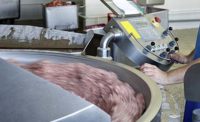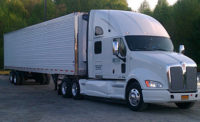Study: Consumers’ Demand for Meat Continues to Drive Processed Meat Industry
Processed meat is an industry that is driven by the demand for meat. A rapid increase in globalization resulted in amped-up meat processing procedures. Consumers increased their protein intake. And, busy, on-the-go, 2-income families rely on ready-to-eat meals that oftentimes, incorporate meat as the main component.
These are just a few factors driving the processed meat industry, according to "Processed Meat and Meat Processing Equipment Market by Types (Beef, Pork, Mutton, Others), by Product Types (Fresh Processed, Raw Cooked, Pre-Cooked, Raw-Fermented, Cured, Dried, Others), by Equipment Types & by Geography - Global trends & Forecasts to 2018."
This report, published by Markets and Markets, a global market research firm, defines and segments the processed meat and meat processing equipment market with analysis of current demand and consumption forecast in terms of revenue. It also identifies the driving and restraining factors with analysis of trends, opportunities, burning issues, winning imperatives and challenges. The market is segmented by types and sub-types. The market revenue is estimated on the basis of important regions such as North America, Europe, Asia-Pacific and Rest of the World (ROW). On the basis of significant contribution to overall demand, key countries have been covered and forecasted for each region.
Some of the important factors that lead to the growth of the processed meat markets are the growing population, rise in the income level of the middle-class consumers in developing countries of Asia-Pacific and Latin America and increase in the need for convenience foods. The economic crisis faced by few countries of the world, obesity crisis and the health risk associated with the consumption of processed meat are the factors that act as constraints for this industry.
The meat processing equipment market is driven by the associated advantages such as increased consumption of processed meat and better quality of meat products. However, the lack of awareness about the processing equipment and availability of trained manpower in the developing countries are the main obstacles in the growth of the meat processing equipment market. Growth is particularly high in the Asia-Pacific countries such as China, India, Japan and New Zealand because of the growing awareness about the processed meat, and this will in turn increase the demand for the meat processing equipment, thereby influencing this industry.
The global processed meat market was estimated to be worth around $361,568.7 million in 2012 and is projected to reach $799,051.2 million by 2018, growing at the CAGR of 14.3% from 2013 to 2018. The global market for meat processing equipment was $7,656.5 million in 2012 and by 2018 is projected to be $11,495.3 million, growing with a CAGR of 7.2% from 2013 to 2018.
Leading manufacturers are focusing on expansion of their respective businesses across regions and setting up new manufacturing plants to ramp up production capacities and broaden overall product line. Major industry participants are involved in new product launches and acquisitions to penetrate the untapped markets of Asia and Latin America.
Looking for a reprint of this article?
From high-res PDFs to custom plaques, order your copy today!





